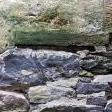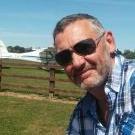-
Posts
29288 -
Joined
-
Last visited
-
Days Won
270
Nickfromwales last won the day on January 10
Nickfromwales had the most liked content!
Personal Information
-
About Me
http://forum.buildhub.org.uk/ipb/index.php?/topic/38-hello-from-the-resident-welsh-plumber/
-
Location
South Wales.
Nickfromwales's Achievements

Advanced Member (5/5)
6.2k
Reputation
-

ASHP low pressure help pls
Nickfromwales replied to canalsiderenovation's topic in Air Source Heat Pumps (ASHP)
He may have used a pump-up pressure bottle to inject, vs drain down and fill via a towel rad / other. Service guys don't like getting wet....... -
1. Just start ringing local spreads tbh. 2. I'm no fan of taping and jointing, other than in a non-domestic setting. Plaster is the way to get the best finish, subject to the spread not being shite. Scotland folk often say that plastering is not common practice, so you may have to ring around a bit / lot. 3. Don't screw through cables or pipes! Select the correct length screws for each room.
-
Flexible tile adhesive. Always important to decontaminate the underside of the tray as they come covered in dust and mould release agents and so forth. I get a cotton dishcloth (old school ones are best) and use a bit of the tile adhesive made up a bit wetter and scour the underside of the tray until you see the adhesive wanting to stay on it. Then butter it a bit and you know it's going to stay put.
-
Ok. You’ll want to be able to push the tray side to side, lengthways, by 5mm (so 10mm of wiggle room), and to be able to have it 5mm away from the opposing wall. This will allow you to get the tray in, and to then be able to load all the gaps with clear CT1. You then mask the top of the tray on the 3 sides, frog tape or pvc electrical tape, and once loaded you push the tray towards the shower head end, and then back against the long wall, displacing the excess. Use (lots and lots) of cheap wet wipes to clean up the excess and then fill up the gap on the far end. Tool this into shape with a plastic packer and then peel off the masking tape. BINGO. Search wetroom and tanking on here and shower room for more info. And this may be a good read. Tanking the shower makes it bombproof. Been doing high end bathrooms for over 30 years and zero failures.
-
This person should have given you the correct solution at the outset, as your principal designer!! Another shining example of the differing levels of competency that are out there.
-
Only an option if you get permission to discharge storm water into the foul network aka ‘combined sewer’, otherwise you could be in a spot of bother if an issue ever occurs downstream.
-
Can you not use slabs? https://www.insulationuk.co.uk/products/150mm-superglass-superwall-32-cavity-wall-batt
- 63 replies
-
- flat roof
- condensation
-
(and 2 more)
Tagged with:
-

Floor slab insulation. Test my logic please?
Nickfromwales replied to saveasteading's topic in Barn Conversions
You never asked for your 1hr free consultancy -
Get the ruffled ones looking as good as you can, but don’t get lost in micro-detail here. You’ll likely look at them twice a year, if that.
-
Straightening these out with weight, and using something uniform (like the 5x2 timber weighted down) is the only cure for the others. Swapping out the least amount of the damaged unit is obvs the way forward, and then to weigh and bond that down then too. Once these are bonded down well, this issue will be gone forever.
-

Floor slab insulation. Test my logic please?
Nickfromwales replied to saveasteading's topic in Barn Conversions
You don’t have to fix the upstand with a dry S&C screed, as the installers just flick a few shoots of mix against it and it pins it perfectly in place. The issue of it lifting slightly, and the screed going under it, is very real, so to remove unnecessary risk it’s always good practice to fix it so it stays down and in full contact with the insulation or sub-floor. -

Floor slab insulation. Test my logic please?
Nickfromwales replied to saveasteading's topic in Barn Conversions
Remember to get these tight into every corner as the curves and divots all need filling / foaming / cutting back etc afterwards; if you’ve not managed this by prevention, then it’s a LOT of time and effort to get these filled and made airtight with foam / passive purple / AT tapes et-al. Put lots of time and effort into getting these filled foam strips put in as tight as you can. I cut and stop / start where it’s easier than forming a turn with continuous strip. Zero detriment when you stop / start, just tape over the joint. -

Floor slab insulation. Test my logic please?
Nickfromwales replied to saveasteading's topic in Barn Conversions
Sorry, I meant the dry sand and cement screed. The perimeter insulation is the same stuff from anywhere, just the colour changes. The differences are: height, does it have a polythene apron (for liquid), does it have a self adhesive strip on the back or not. Ok. If it’s a poured aka liquid screed then you’ll be best off getting the foam skirting with the attached poly apron / membrane. Self adhesive strip helps to just lay this out, but cannot really be relied on, so you’d end up with some kind of additional, mechanical fixing (staple / round head nail). Does the Clockwork screed company operate near you? They’ve just poured cementitious self levelling screed at my Manchester project, and they were the best poured liquid screeders I have seen to date. And we’re not the most expensive quote too! https://www.clockworkscreed.co.uk With nobody EVER wanting to do this twice, or to have to revisit it, I’d defo get these guys in. They mix and pour from one super wagon. A very impressive setup. -

Floor slab insulation. Test my logic please?
Nickfromwales replied to saveasteading's topic in Barn Conversions
My preferred choice as my mate gets these traditional screeds perfectly flat and level every single time. Plus, he can manipulate levels for sliders etc which is a lot harder to do with wet concrete or liquid screeds. -

Floor slab insulation. Test my logic please?
Nickfromwales replied to saveasteading's topic in Barn Conversions
That’s one heck of a wobble! These are original floors?







